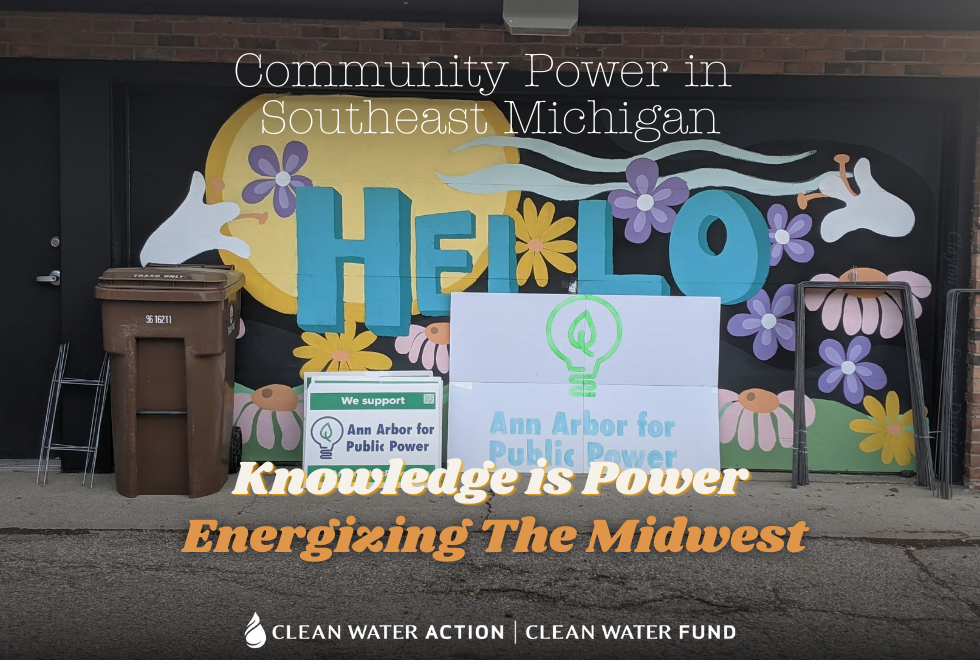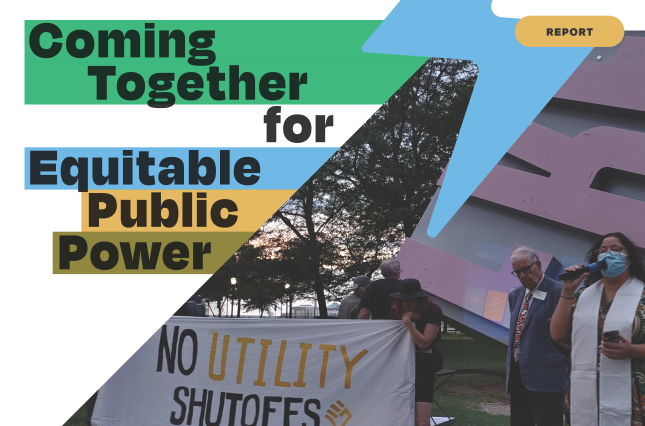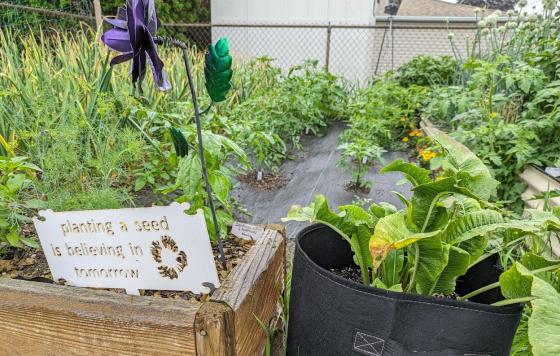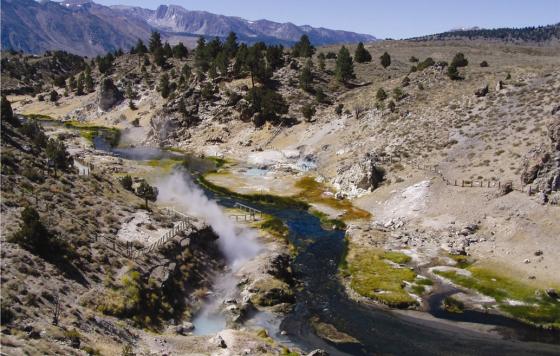
The Public Power Project is a work of passion and collaboration for a better energy future. Over the past year we took to the road and were able to see communities fighting to hold their utilities accountable, municipal utilities working hard to keep supplying power to their rural towns, and activists who are pushing their local governments to break from extractive investor owned models and transition to municipalization (creating a publicly owned power utility). Let us take you across the Midwest to share insights in this new blog series "Knowledge Is Power: Energizing the Midwest" and accompanying report, Coming Together for Equitable Public Power.
Part 6: Community Power in Southeast Michigan
Before our preparation for the Coming Together For Equitable Public Power report wrapped up, Erik McCleary and I were able to get a series of interviews done in southeast Michigan. Nowhere else in our interviewing did we get to focus on such a diversity of struggles against the same failures of an incumbent investor-owned utility, and nowhere better exemplified the report insight that it will take a diversity of strategies to expand equitable public power.
Our interviews focused on three communities: Ann Arbor, Pontiac, and Highland Park. All three suffer from terrible power reliability related to an archaic distribution grid. All three have residents frustrated with high utility costs, unsafe and unreliable infrastructure, and limited access to clean energy with the incumbent energy utility - DTE Energy. And all three are considering what a change in ownership and management of the energy system could do to improve their energy situations.
But despite these similarities, the communities couldn’t be more different. Ann Arbor is home to the University of Michigan, a bustling and affluent community with no shortage of resources and an ambitious climate emissions reduction plan. Highland Park and Pontiac and small, post-industrial, majority Black communities previously subject to the notorious practice of emergency management, in which unelected state officials resolved debts through the sale of assets and austerity.
These similarities and differences have given rise to three unique approaches to expanding direct, democratic control of the energy system.
ANN ARBOR
Studying Energy Options
With funding and institutional support, Ann Arbor completed an energy options analysis which was just presented to City Council. The study compared approaches working with DTE, building renewable energy through a sustainable energy utility, and making a full conversion to public power. It also compared various means to achieve net zero carbon reductions by 2030. While advocates such as Ann Arbor For Public Power already seem to have some concerns about the framing and methodology (such as the methods that led to community solar receiving a “poor” ranking for Equity & Justice) for the study results, the overall insights pointed to expanding community and city owned renewable energy and conducting deeper feasibility assessments on a full municipalization effort. These efforts parallel A2’s presence as an intervenor in numerous cases at the Michigan Public Service Commission, often in lock step with community-based advocates. In sum, it’s a well-resourced city with aggressive climate goals and the will to pursue a wide variety of strategies to achieve them.
HIGHLAND PARK
Community & Federal Partnerships
Smaller budgets and a cascade of ongoing crises mean Highland Park isn’t in the same position as Ann Arbor. But that didn’t stop Highland Park City Council from calling for community perspectives on pursuing a public power feasibility study in response to major power outages in 2021. Soulardarity, a community organization formed to address DTE’s repossession of most of the City’s streetlights, responded with a memo supporting a feasibility study as a valuable project to understand the state and value of the electric infrastructure in the city, even if municipalization ultimately seemed infeasible. City and community have since partnered to secure participation in the Department of Energy’s Communities LEAP program to develop energy solutions which it can begin to implement right away. While municipal leadership is burdened with the continuous effort of litigation over water debt that goes all the way back to Ford, the City and community organizations like Avalon Village and Parker Village have built partnerships to model energy solutions to the challenges faced by Highland Parkers struggling to afford and access power.
PONTIAC
Calling For State Action
In much the same fiscal position as Highland Park, Pontiac has taken another approach to the expansion of public control of the grid and new energy generation. Responding to yet another wave of extended outages, Pontiac’s city council passed a unanimous resolution demanding accountability from DTE, which called on the Michigan Legislature “to start a committee researching the feasibility of a democratically accountable state-run utility in Michigan.” While Pontiac is not home to a community organization precisely like Soulardarity in Highland Park, which has an explicit focus on energy democracy, leadership still felt moved to make their position known. Pontiac shares Highland Park’s financial woes emerging from the austerity measures imposed primarily on Black cities in Michigan under emergency management, and did not see the prospects of municipalization looking very sunny under current conditions. Hence the press for the state to take accountability for establishing a public power option at the state level, much like California’s Golden State Energy proposal, should DTE to continue to fail customers.
Of course, these summaries leave out much nuance. There is persistent tension between community organizations, city governments, and various elected representatives in all of these places about which strategies are best and whether pursuing an ownership transition is worth the cost and conflict with a powerful incumbent utility.
But what is clear across the board is that more community control - of the grid and new clean energy - is desired across a variety of communities. And while tactical assessments and priorities vary, southeast Michigan is rumbling with potential to expand public and community power. What remains to be seen is whether the stakeholders from city governments, community organizations, and the public power sector can come together to challenge the entrenched power of the incumbent utility which is persistently failing us and come up with creative solutions to the challenges of transformation.
The potential is there. Time will tell if we can harness it.
This is the sixth in a series of blogs exploring public power across the Midwest. Read other published blogs in the series and the accompanying report, Coming Together for Equitable Public Power.




